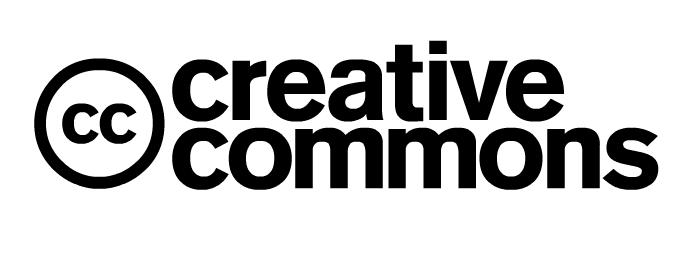Over the centuries content producers have searched for ways of protecting their wares. From engraving names on sculpture, to scribing them on art, to the 21st-century development of Digital Rights Management (DRM) technology, these methods have only gotten more complex. The overarching idea behind all of the aforementioned methods, however, is a legal term known as copyright, and relatively recent innovations in the field of copyright law are beginning to change this fundamental right of ownership.
Legally, copyright has existed in some form or another for well over 450 years, dating back to the days of the Renaissance. Modern copyright, however, can only be traced back about 300 years, to the law known as the Statute of Anne.[i] This English proclamation, known formally as An Act for the Encouragement of Learning, granted content creators the sole rights to their works for a period of fourteen years, renewable only once if the creator was still alive.[ii] This created the first standard for copyright, and has been built upon over the three centuries since its inception. [iii]
Unfortunately, the modern age has seen new and greater challenges arise regarding copyright, particularly within the last thirty years. The growth of electronic media, beginning with VHS tapes and continuing on through the new Blu-Ray format as well as online storage components like those of Carbonite and Windows Live SkyDrive, has been a boon to pirates and copyright infringers everywhere. In response to this advancement of technology, certain reactive elements within society (e.g. the motion picture and recording industries) have attempted to restrict ownership through means such as copy protection software, protected hardware components, and Byzantine licensing agreements. However, other, more progressive elements have also gained a voice in this gladiatorial arena, and have given rise to a new term, one far more adaptive to the modern age. That term is known as copyleft.
The first formal institution of copyleft can be found in the historical annals of the Free Software Foundation and its founder, Richard Stallman. Stallman was a programmer at MIT, creating and maintaining software when he found himself forced to make a choice: betray himself and his fellow programmers by subscribing to proprietary (and pricey) software code, or work for the good of the community by producing compatible software that also happened to be free for all. He chose the latter, and the seeds of what would later be known as the GNU General Public License (GPL) were sowed.[iv] Copyleft, according to Stallman, “flips [copyright] over to serve the opposite of its usual purpose: instead of a means for restricting a program, it becomes a means for keeping the program free.”[v]
The GPL was the first of the free software licenses, and an important step in the development of copyleft. It established what have become known as the four freedoms for software users; these freedoms include the ability to use software for any purpose, the freedom to change it as necessary, the ability to share it freely, and the freedom to share any changes made to it. Software and content under the GPL and its derivatives become for all intents and purposes, free in every sense of the word, and this freedom lasts in perpetuity, as no restrictions may be added to it after the fact.[vi] Since its inception, the GPL has become a very common license, used in software such as Linux, a free operating system, and MediaWiki, the software that powers Wikipedia, a free online encyclopedia.
The problem with the GNU General Public License is its scope; having been developed for use in licensing software, it quickly became used solely for that purpose. To expand the idea of copyleft to other media (e.g. videos, music, photography, etc.), a new type of copyleft protection needed to be developed. Enter the Creative Commons.
Creative Commons was founded in 2001 by Duke University’s Center for the Public Domain. Using the GPL as a basis for its development, a platform was created that allows people to license their private works for one of three main avenues: free for certain uses only, free for all but with certain conditions of use, or into the general public domain. Each of these is further broken down into subgroups. Unlike the GPL, however, a Creative Commons license can be applied to any type of work; for example, many photographs on the website Flickr are licensed under one of the Creative Commons variants. Since its release, Creative Commons licenses have been applied to over 350,000,000 separate works around the world.[vii]
The effects of copyleft are just now beginning to be felt in the legal world. In 2003, the first court case involving the GPL entered the legal system in Massachusetts. The case, Progress Software Corp. v. MySQL AB, resulted from a dispute as to whether one company (Progress Software) violated the copyright of MySQL. After an initial lawsuit brought by Progress against MySQL citing a breach of contract, MySQL filed a countersuit regarding possible infringement on the part of Progress. Specifically, the case revolved around the inclusion of certain GPL-licensed MySQL software in Progress’ proprietary Gemini product. Gemini had been released as its own program, but MySQL asserted that it was a derivative work under the terms of the GPL. This case has been cited by proponents as a major case in the legality of such licenses, as the GPL was never challenged on its legitimacy.[viii] The case resulted in a partial settlement between the involved parties.
The first actual lawsuit over copyleft was not filed until 2007, when the case known as Erik Andersen and Rob Landley v. Monsoon Multimedia came to trial. Andersen and Landley, through representatives of the Software Freedom Law Center, were suing Monsoon Multimedia, a multimedia software company, over the inclusion of the GPL-licensed BusyBox software in the latter organization’s product, a series of time-shifting devices similar to TiVo. Although the case was eventually settled shortly thereafter,[ix] it provided the foundation for a score of other similar lawsuits, all of which have resulted in forcing the defendants to comply with the GPL and establishing the idea of copyleft as a binding legal force.
Copyleft has yet to take a large hold in the public consciousness as of yet due to its still-niche application. Traditional copyright is so ingrained into society that new methods like Creative Commons and the GPL haven’t had the opportunity to grow as well as they could with efficient marketing and public acceptance. As previously mentioned, the two are still mostly invoked when dealing with technological products such as operating systems, but more and more artists are invoking copyleft protection on their works, particularly photographers. There is still a long way to go, however, and with proponents of traditional copyright having very deep pockets, the road ahead to a world more accepting of product sharing is going to be long and arduous. With any luck, a sensible balance can be achieved, one that is amenable to all parties involved.
[i] American Society of Media Photographers. Copyright Tutorial: A Brief History of Copyright. n.d. http://asmp.org/tutorials/brief-history-copyright.html (accessed January 27, 2011).
[ii] Ibid.
[iii] Patterson, Lyman Ray. Copyright in Historical Perspective. Nashville: Vanderbilt University Press, 1968.
[iv] Stallman, Richard M. “The first software-sharing community.” The GNU Project. November 12, 2010. http://www.gnu.org/gnu/thegnuproject.html (accessed January 27, 2011).
[v] Ibid.
[vi] Stallman, Richard M. “The first software-sharing community.” The GNU Project. November 12, 2010. http://www.gnu.org/gnu/thegnuproject.html (accessed January 27, 2011).
[vii] Creative Commons. History – Creative Commons. n.d. http://creativecommons.org/about/history (accessed January 27, 2011).
[viii] We Blog CRM. When Worlds Collide: Ten Notable Open-Source Legal Battles . December 31, 2006. http://www.blogcrm.com/when-worlds-collide-ten-notable-open-source-legal-battles.php (accessed January 27, 2011).
[ix] Software Freedom Law Center. BusyBox Developers and Monsoon Multimedia Agree to Dismiss GPL Lawsuit. October 30, 2007. http://www.softwarefreedom.org/news/2007/oct/30/busybox-monsoon-settlement/ (accessed January 31, 2011).



